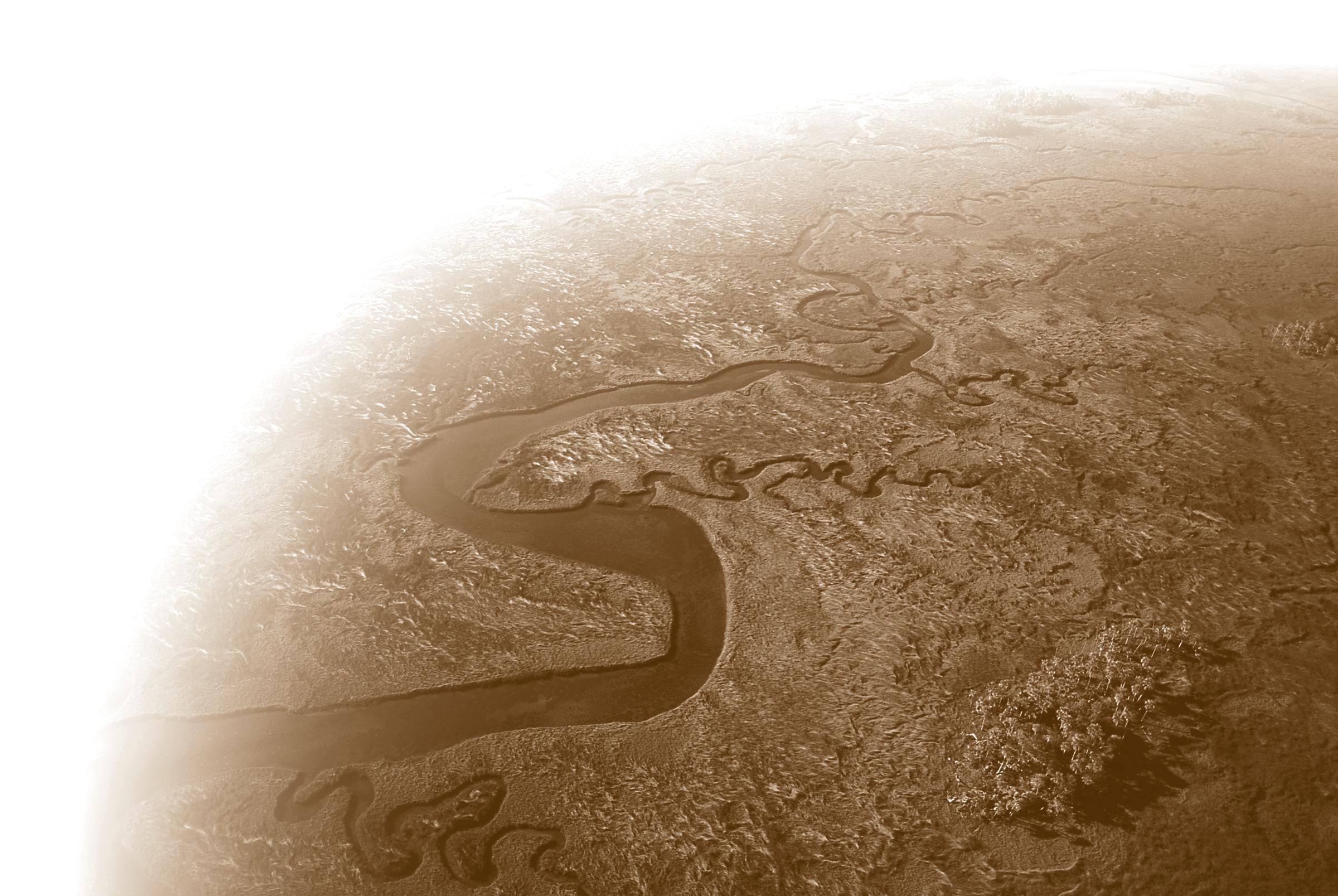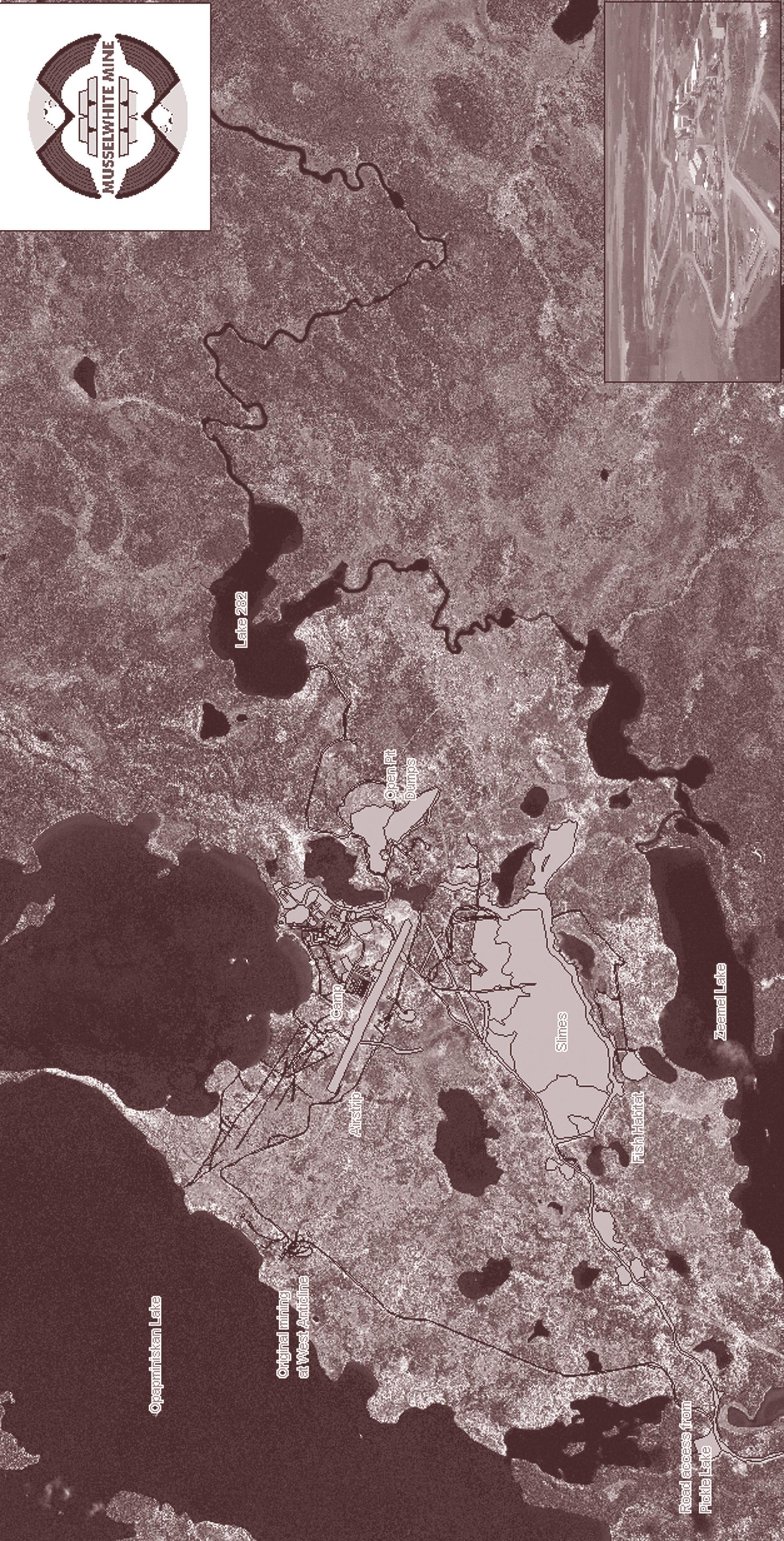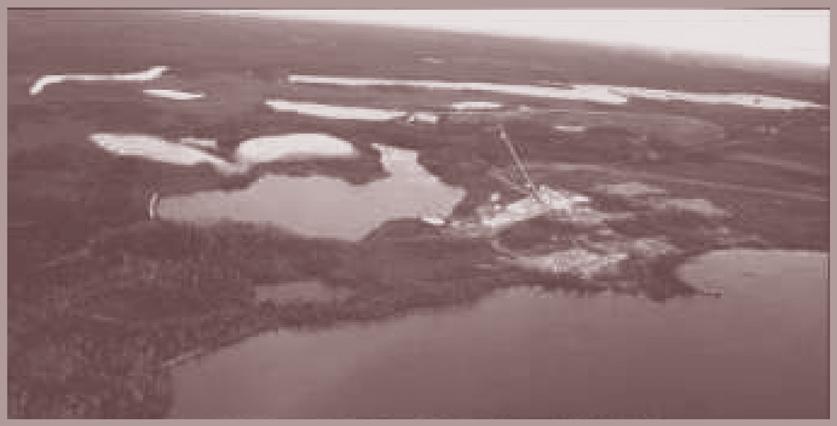
8 minute read
1.2 Learning Activity Musselwhite Case Study: A New Way of Mining
Musselwhite Case Study: A New Way of Mining
1 of 2
Suggested Levels: Intermediate and Senior
Purpose • To introduce the importance of sustainable practices in the mining industry. • To demonstrate how technology is used in the mining process. • To examine the environmental concerns that can accompany mining. • To produce an action plan for reclaiming a mine site upon closure.
Time 135 minutes
Resources • Musselwhite Case Study student handout • Musselwhite Closure Plans teacher information sheet
Link to Ontario The Earth’s Crust Curriculum Grade 7 • Relating Science and Technology to the World Outside the School
Natural Resources Grade 7 • Understanding Concepts
Human-Environment Interactions • Understanding Concepts Grade 9 • Learning through Application
Human-Environment Interactions • Understanding Concepts Grade 11
Earth Materials Grade 12 • Relating Science to Technology, Society, and the Environment
Environment and Resource • Understanding and Managing Change Management Grade 12
Teacher Information
The Mining New Opportunities video/DVD was filmed in part at the Musselwhite underground gold mine in northwestern Ontario and features interviews with employees of this mining operation. As there is no road access, this is a fly-in operation, with pickup points in Thunder Bay and five northern communities. The mine employs 293 full-time employees, has 105 contract personnel providing support services, and uses First Nations contractors to provide air transportation and camp services. Musselwhite Mine is operated and owned (68%) by Placer Dome – the world’s sixth largest gold mining company. Kinross Gold Corporation has the remaining 32% interest.
This case study provides students with an example of how the mining industry uses responsible and sustainable resource management. The assignment consists of designing a reclamation plan that is creative, but also has reasonable expectations. Students need to have a clear understanding of the purpose behind reclamation so that their design reflects the needs of the community and the surrounding environment.
Method
2 of 2
Intermediate and 1. The Musselwhite Case Study student handout provides an overview of how Senior Levels Placer Dome uses responsible and sustainable resource management in mine development, mineral production and community relations. 2. The Create a Reclamation Action Plan and Musselwhite Site Map sections of the student handout provide instructions and additional background information for the completion of this activity. To further research this assignment, related Web site links are also provided. 3. After reading the case study, instruct students to work in partners to develop a reclamation action plan for this site when mining operations are complete in the future. 4. The students’ report should give a summary of their plans, a description of the resources and materials needed, and drawings representing what the area looked like before and after reclamation. 5. Invite students to deliver a 10 minute oral presentation to explain their action plan. 6. To summarize the activity, use the Musselwhite Closure Plans teacher information sheet to present the actual reclamation plans of Musselwhite. Display the series of aerial photos showing the condition of the property in the past (mine construction), present (mine operation) and future (mine closure).
Musselwhite Case Study: A New Way of Mining
1 of 3
In 1973, significant gold deposits were discovered 500 kilometres north of Thunder Bay, Ontario, near Opapimiskan. Since then, there has been a wide array of exploration and studies of the proposed mine to determine the effects it could have upon the region’s people and environment. The water, vegetation, fish, amphibians, birds and mammals in the Musselwhite area were carefully studied to determine the effects of the mine.
Completed in 1997, Musselwhite Mine is a modern mine that is designed to address modern concerns. Musselwhite Mine, owned by Placer Dome and Kinross Gold Corporation, includes a mill fed by an underground mine and a small open pit mine. The property consists of approximately 17,000 hectares. November 1, 2001 saw the production of the first one million ounces of gold. With current mineral reserves, Musselwhite has an expected mine life through to 2013.
Musselwhite’s design ensures that:
• water quality in the rivers and lakes will continue to meet provincial standards during and following mine operation;
• air emissions will be minimal;
• the small amounts of fish habitat lost to tailing and polishing ponds will be replaced;
• metal levels in fish will remain low;
• there is limited temporary displacement of vegetation and wildlife; and
• the land will be revegetated and returned as near to its original state as is economically feasible.
The mine includes state-of-the-art engineering of effluent treatment, spill containment and air emission control. The gold is recovered using an easily destroyed cyanide solution. Waste rock is washed and treated to reduce contaminants to safe levels before it is deposited in a tailing pond.
Workers travel by air to the mine from local First Nations communities and Thunder Bay. The mine employs 293 full-time employees and has 105 contract personnel providing support services. Musselwhite uses First Nations contractors to provide air transportation and camp services. A modern camp, kitchen and recreation centre are available to employees and during the summer months employees enjoy sailing, kayaking and other activities on Opapimiskan Lake. The recreation centre offers a gymnasium, weight room, saunas, lounge and Internet café.
Potential increases in the harvesting of fish and wildlife by employees and contractors will be minimized by limiting travel, by implementing a catch-and-release policy for fish and by banning firearms on the property.
An Historic Agreement: Local People, Local Concerns
2 of 3
The Musselwhite Mine is located on the traditional lands of the North Caribou First Nations. First Nations elders identified a birth site, a spirit site and a burial site that are preserved in the area. Archaeological studies have been conducted for the mine site, power line and road areas to ensure other culturally significant sites will not be disturbed. The assessed social and environmental effects on the area bands and the people living in local communities were compiled through public consultation, meetings and reports prepared by the First Nations. Preserving the environment and heritage of the Musselwhite Mine area is the primary concern of the First Nations people, as well as ensuring that local residents receive economic and quality-of-life benefits from the mine.
These concerns led to the signing of the Musselwhite Agreement in 1992. This accord between Placer Dome, TVX Gold (now Kinross Gold Corporation), the First Nations, the Province of Ontario and the Government of Canada was a step forward in the relationship between the mining industry and the aboriginal community. The Musselwhite Agreement defines how First Nations will benefit from the mine, provides a strategy to minimize any possible negative effects and establishes commitments to protect the environment.
Create a Reclamation Action Plan
Mining companies have a serious obligation to both their shareholders and the public to minimize the environmental impact caused by their activities. Following closure in 2013, Placer Dome will need to accelerate its restoration efforts at Musselwhite Mine. Imagine that you have been hired to develop a plan for the eventual closure and reclamation of the site. A map of the operating mine site is included in the handouts. The site includes: buildings and equipment; an underground mine; a small open pit mine; a tailing impoundment; a polishing pond; a treatment wetland; a 1,500 metre airstrip (gravel surface); and an access road.
Your job is to design a reclamation solution for this site when mining operations are complete in the future. You are required to write a report that explains:
• what the area will be used for following closure and reclamation; • what steps you will take in your reclamation project; and • what resources you will need and how you will use them (e.g. topsoil, trees, plants, sand and gravel, etc.)
Include two diagrams, one that shows how the area looks before and one showing how it will look after you fix it up. These diagrams can be sketches, pictures, or computer generated.
Use your imagination, be creative and have fun!
Sample photographs of rehabilitated mine sites:
http://www.mndm.gov.on.ca/mndm/mines/mg/rehab/rehabexmp_e.asp http://www.mii.org/reclmetals.html
Musselwhite Site Map
3 of 3

1 of 1
Progressive reclamation continues during mine operation with the seeding of grasses and tree planting. Planning is also underway to conduct annual satellite imagery of the property to study the health of the vegetation and whether or not it indicates the presence of stress on vegetation.
As part of ongoing reclamation, water is stored onsite in various compounds including the tailings impoundment, polishing pond and treatment wetland during the winter. Water release from the polishing pond to the surrounding environment begins sometime after mid-April and can continue through to the end of November.
Following closure, anticipated in 2013, Placer Dome will accelerate its restoration efforts at Musselwhite Mine by:
• removing all structures, equipment and materials; • establishing soil conditions conducive to plant life as well as stabilizing landscape, soil and other organic materials; • contouring and replanting disturbed area with jack pine seedlings; • re-establishing natural drainage systems; • creating new fish habitat in the open pit and constructing a marsh; • ensuring no increase in metal/pollutant levels in wildlife or drinking water; • obstructing access road and removing bridges to limit use; • re-establishing wetlands in treatment pond and creating new wetlands in the tailing pond and open pit; and • monitoring the ecosystem for a minimum of five years after closure.
Upon completion, vegetation will cover the site, a wide range of wildlife will return, and new small lakes will be established in the open pit and tailings pond.
1. Mine Construction
2. Mine Operation
3. Mine Closure









